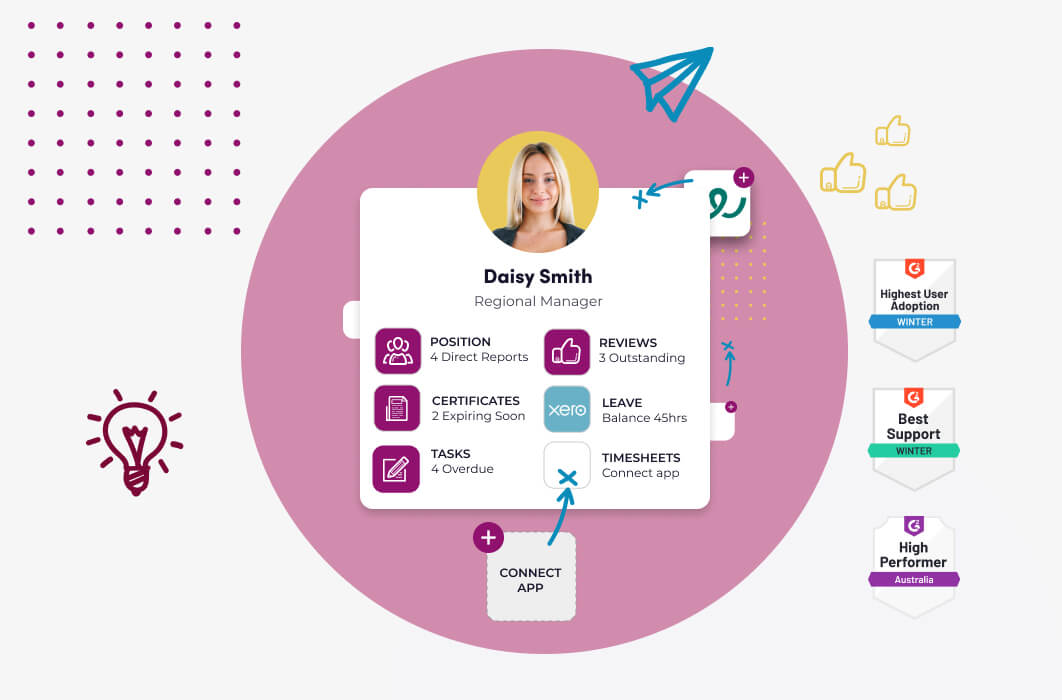It goes without saying that people are vital to the success of any company. There’s no doubt that any business which can attract talent effectively, utilise, grow and retain employees is setting itself up for long-term success. HR metrics will help you communicate just how imperative it is to focus on employees and offer them an exceptional working experience.
HR departments are generating more data than ever before with access to modern HR software technology. But at the same time they often struggle to select the right HR metrics that correlate to the broader business goals.
It is becoming increasingly important for HR leaders to link the HR function into organisational performance. By using HR metrics, human resources leaders can show results that contribute to bottom-line results.
Why are HR metrics so important?
In any walk of life, we use data, metrics and reporting to help us achieve success. For instance, how often do you hear people say, “how many steps did you do today”? Understanding metrics and the insights they provide is hugely important, especially when we now have technology gathering so much data.
It is no different in HR. Metrics can help an HR leader:
- Justify their department’s effectiveness and relevance to business strategy
- Improve the credibility of and support for HR initiatives
- Improve the quality , relevance and delivery of HR services
- Help to understand what competencies and initiatives will help improve employee performance
- And much more.
Measuring the impact HR has on the business will help senior management to understand the effectiveness of initiatives that are in place. More importantly, they will be able to make data driven decisions on new strategy, budget and tactics.
Using metrics to tell the story allows HR professionals and other business managers to make more effective decisions.
What HR metrics should be track?
There are more than a handful of HR metrics that contribute to business value, and one thing is for certain – do not use them all. Therefore, the key question when measuring these metrics is this: what does the business need?
Answer this question by having a conversation with business leaders and discussing goals, objectives and key results. In fact a strategic collaboration between senior management and HR leaders will help determine what metrics will paint a picture of success.
For example:
Senior management agree that calculating the total number of employees who leave the company is not valuable information. Instead, they wish to see how many employees leaving the business are key people. For instance, key people include employees in strategic positions and have unique skills. Also, senior management are interested in the duration of their employment, why they left and the cost of replacing the employees who left. Finally, senior management wish to see how all these events affect company profits.
Common metrics tracked by HR
Revenue per employee
Obtained by dividing a company’s revenue by the total number of employees in the company. This indicates the average revenue each employee generates. It is a measure of how efficient an organisation is at enabling revenue generation through employees.
Offer acceptance rate
The number of accepted formal job offers (not verbal) divided by the total number of job offers given in a certain period. A higher rate (above 85%) indicates a good ratio.
Training expenses per employee
Obtained by dividing the total training expense by the total number of employees who received training. The value of this expense can be determined from measuring the training efficiency. Poor efficiency may lead you to re-evaluate the training expense per employee.
Training efficiency
Obtained from the analysis of multiple data points, such as performance improvement, test scores, and upward transition in employees’ roles in the organization after training. Measuring training efficiency can be crucial to evaluate the effectiveness of a training program.
Voluntary turnover rate
Voluntary turnover occurs when employees voluntarily choose to leave their jobs. It is calculated by dividing the number of employees who left voluntarily by the total number of employees in the organisation. This metric can lead to the identification of gaps in the employee experience that are leading to voluntary attrition.
Involuntary turnover rate
Involuntary turnover occurs when employees are terminated and leave their jobs.
For this reason, involuntary turn over rate is calculated by dividing the total number of employees who left involuntarily by the total number of employees in the business. This metric can be tied back to the recruitment strategy and used to develop a plan to improve the quality of hires to avoid involuntary turnover.
Time to fill
The number of days between advertising a job opening and hiring someone to fill that position. The time to fill metric offers insights the recruitment strategy while also serving to identify areas where time can be saved.
Time to hire
The number of days between approaching a candidate and the candidate’s acceptance of the job offer. Just like time to fill, data-driven analysis of time to hire can benefit recruiters and help them improve the candidate experience to reduce this time.
Absenteeism
Absenteeism is a productivity metric. To calculate this metric, divide the number of days missed by the total number of scheduled workdays. This metric offers insights into overall employee health and can also serve as an indicator of employee happiness.
Human capital risk
This may include employee-related risks, such as the absence of a specific skill to fill a new type of job. Additionally, it includes the lack of qualified employees to fill leadership positions, the potential of an employee to leave the job based on several factors, such as relationship with managers, compensation, and absence of a clear succession plan.
Feeling the HR Metrics vibe? Continue your research into HR metrics and HR analytics by reading some of the great HR books available online.



